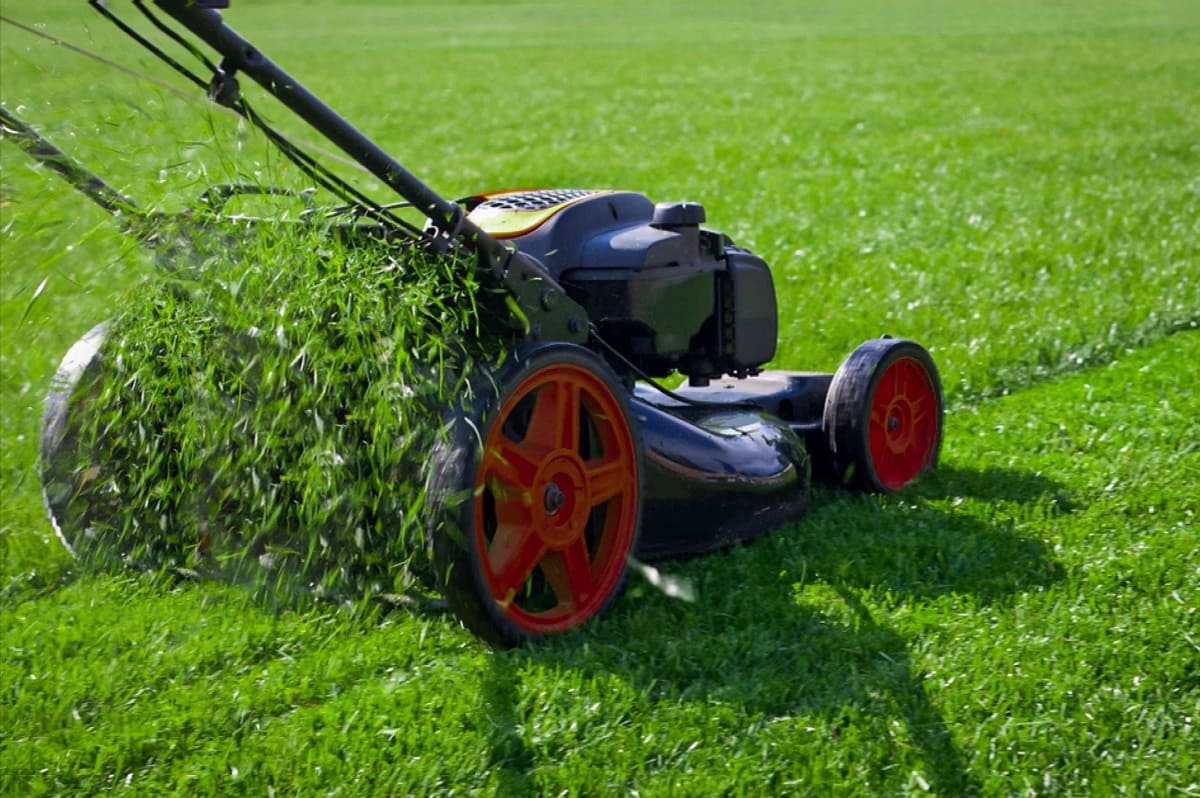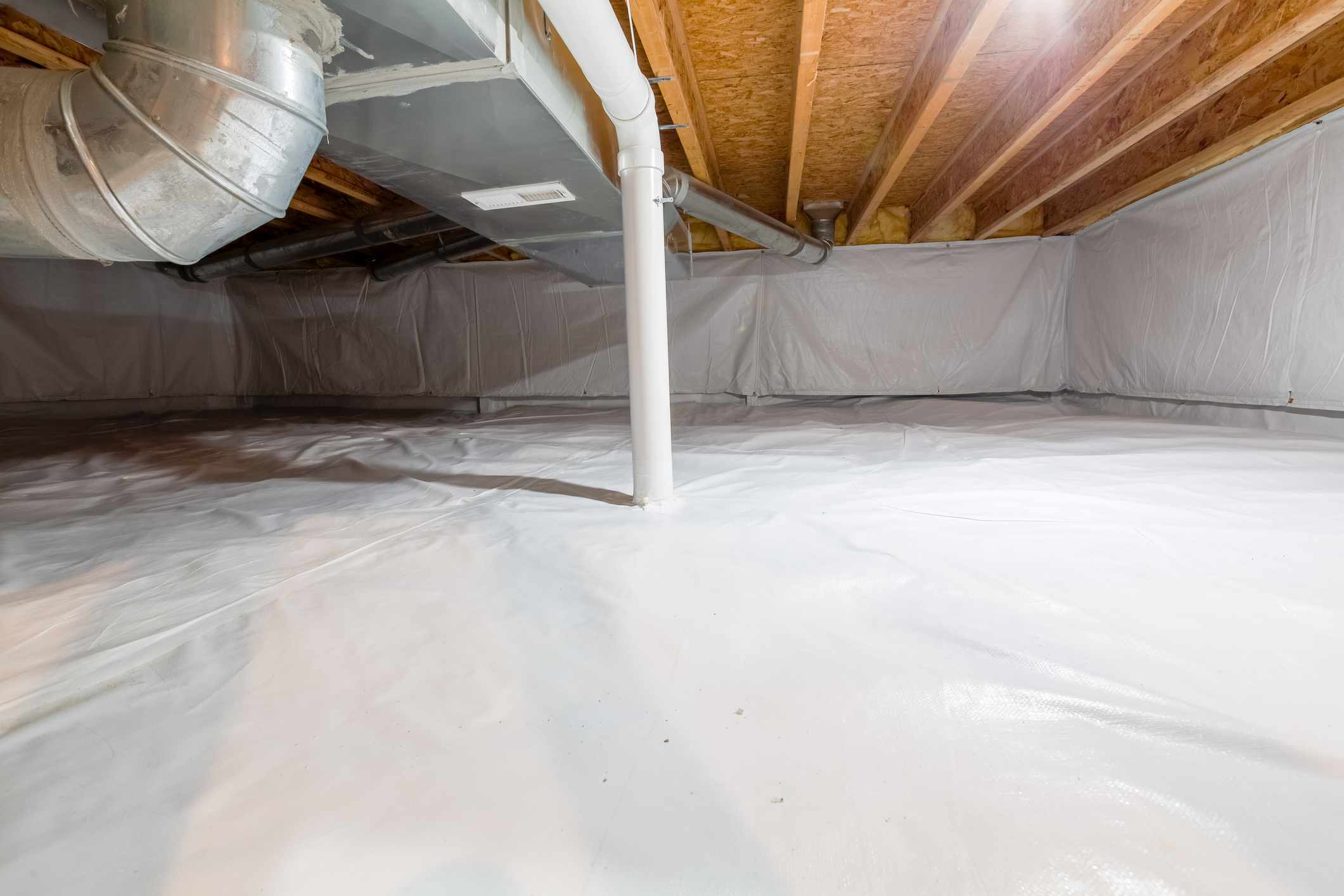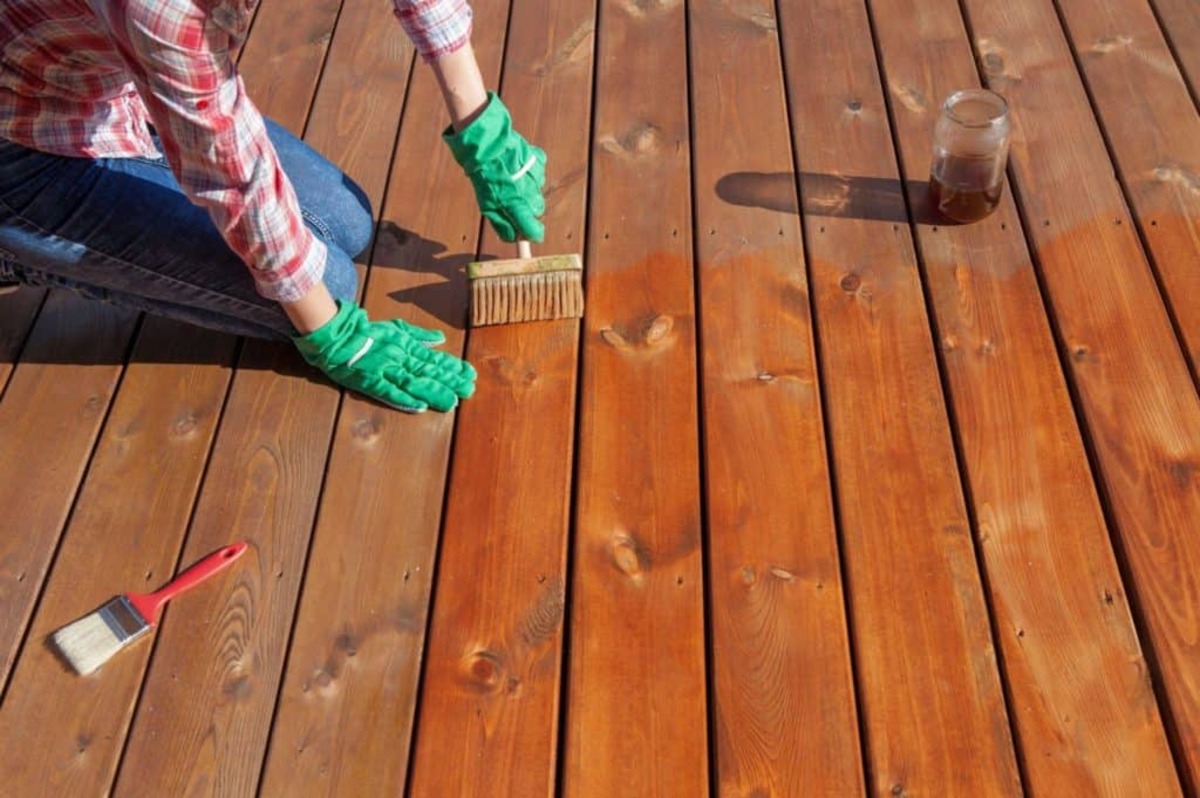Home>Garden Essentials>What Home Owners Need To Know About Lawn Care


Garden Essentials
What Home Owners Need To Know About Lawn Care
Modified: September 2, 2024
Discover essential lawn care tips for home owners with gardens. Learn how to maintain a beautiful garden with expert advice and effective techniques.
(Many of the links in this article redirect to a specific reviewed product. Your purchase of these products through affiliate links helps to generate commission for Storables.com, at no extra cost. Learn more)
Introduction
Welcome to the world of lawn care! As a homeowner, tending to your lawn is not only a source of pride, but it also contributes to the overall appeal and value of your property. A well-maintained lawn can create a beautiful outdoor space where you can relax, entertain, and enjoy the beauty of nature.
Lawn care involves a combination of regular maintenance practices that promote the health and vitality of your grass. From mowing and watering to fertilization and weed control, each step plays a crucial role in achieving a lush, green carpet of grass.
In this article, we will delve into the essentials of lawn care and provide you with the knowledge and tips you need to keep your lawn looking its best. Whether you are a beginner or an experienced gardener, there is always something new to learn and incorporate into your lawn care routine.
So, let’s dive in and discover what it takes to create a stunning lawn that will be the envy of the neighborhood!
Key Takeaways:
- Proper lawn care is essential for a beautiful, healthy, and functional outdoor space. It involves mowing, watering, fertilizing, and weed control to create a lush green oasis that enhances your property’s value.
- Choosing the right grass type, implementing seasonal care, and addressing common lawn problems are crucial for maintaining a vibrant lawn. Hiring professional lawn care services can provide expertise, convenience, and consistent care for your lawn’s needs.
Importance of Lawn Care
Proper lawn care is not only about aesthetic appeal; it is crucial for the overall health and vitality of your grass. Here are a few reasons why lawn care is of utmost importance:
- Enhanced Curb Appeal: A well-maintained lawn adds significant curb appeal to your home. It creates a positive first impression on visitors and potential buyers, increasing the value of your property.
- Healthier Grass: Regular lawn care practices, such as mowing and fertilizing, help to promote healthy growth of grass. This results in a lush, vibrant lawn that can better withstand environmental stresses and resist diseases and pests.
- Weed Control: Neglected lawns are prone to weed invasion, which can choke out the grass and make your lawn look unsightly. Proper lawn care practices, including weed control measures, help to prevent and eliminate weeds, keeping your lawn weed-free.
- Pest Prevention: Well-maintained lawns are less susceptible to pest infestations. Regular inspections and appropriate pest control measures can help to keep destructive insects at bay, ensuring the health and longevity of your grass.
- Environmental Benefits: A healthy lawn plays a crucial role in the environment. It helps to filter and absorb rainwater, preventing soil erosion and reducing the risk of flooding. Grass also acts as a natural air purifier, capturing dust particles and pollutants, and releasing oxygen into the atmosphere.
- Functional Outdoor Space: Your lawn serves as an outdoor extension of your home, providing space for relaxation, outdoor activities, and social gatherings. Proper lawn care ensures that your outdoor space is safe, enjoyable, and functional for all your needs.
By investing time and effort in proper lawn care, you can reap the benefits of a beautiful, healthy, and inviting outdoor space that enhances your quality of life and leaves a lasting impression on others.
Types of Grass for Lawns
Choosing the right type of grass for your lawn is crucial for its success and longevity. Different grass varieties have varying characteristics, such as growth patterns, tolerance to climate conditions, and maintenance requirements. Here are some popular grass types for lawns:
- Bermuda Grass: Bermuda grass is a warm-season grass that thrives in hot climates and is known for its excellent tolerance to drought. It is a resilient and durable grass that can withstand heavy foot traffic. Bermuda grass has low water and mowing requirements, making it a popular choice for high-use areas.
- Zoysia Grass: Zoysia grass is another warm-season grass that is native to Asia. It is known for its dense and lush growth, making it ideal for creating a soft carpet-like lawn. Zoysia grass has good tolerance to heat, drought, and traffic. It requires less mowing and is relatively low maintenance.
- St. Augustine Grass: St. Augustine grass is a popular choice for lawns in coastal regions and warm climates. It has good shade tolerance and can grow in a wide range of soil conditions. St. Augustine grass has a medium texture and forms a dense lawn, providing good weed suppression.
- Kentucky Bluegrass: Kentucky bluegrass is a cool-season grass that is highly acclaimed for its lush, dark green appearance and fine texture. It is well-suited to moderate climates and requires regular watering. Kentucky bluegrass is known for its excellent durability and ability to recover from damage.
- Fescue Grass: Fescue grass is a cool-season grass that is characterized by its adaptability to a wide range of climates. It has good drought tolerance and shade tolerance, making it suitable for lawns with varying sunlight conditions. Fescue grass is known for its deep-rooted system and ability to stay green during the hot summer months.
- Ryegrass: Ryegrass is a cool-season grass that is often used for overseeding warm-season lawns to maintain a green lawn during the winter months. It establishes quickly and provides a vibrant green color. Ryegrass is known for its fast growth and ability to tolerate heavy traffic.
When selecting the type of grass for your lawn, consider factors such as your climate, soil type, amount of sunlight, and overall maintenance preferences. Consulting with a local garden center or lawn care professional can help you make an informed decision and choose the best grass variety for your specific needs.
Basic Lawn Care Practices
Maintaining a healthy and vibrant lawn requires a combination of basic lawn care practices. By implementing these practices, you can ensure the long-term health and beauty of your grass. Let’s explore some of the essential lawn care practices:
- Regular Mowing: Proper mowing is crucial for maintaining the ideal height and density of your grass. Set your mower blades to the recommended height for your specific grass type and mow frequently enough to avoid cutting off more than one-third of the grass blade at a time. This promotes healthy growth and prevents stress on the grass.
- Watering: Adequate watering is essential for a lush and healthy lawn. Deep, infrequent watering promotes deep root growth and helps the grass become more drought-tolerant. Water your lawn in the early morning to minimize evaporation and fungal diseases. Avoid overwatering, as it can lead to shallow root growth and increased susceptibility to pests and diseases.
- Fertilization: Regular fertilization provides the necessary nutrients for the grass to thrive. Choose a high-quality lawn fertilizer that is specifically formulated for your grass type and apply it according to the recommended schedule. This helps to promote healthy growth, improve color, and increase resistance to pests and diseases.
- Weed Control: Keeping your lawn weed-free is an essential part of lawn care. Regularly inspect your lawn for weeds and promptly remove them by hand or using appropriate herbicides. A thick, healthy lawn can naturally suppress weed growth by crowding them out.
- Aeration: Lawn aeration involves creating small holes in the soil to alleviate compaction and improve air, water, and nutrient penetration. Aerating your lawn once or twice a year allows the roots to breathe and promotes a healthier, more robust lawn.
- Overseeding: Over time, lawns can suffer from thinning and bare patches. Overseeding involves spreading grass seed over existing turf to fill in these areas and improve the overall density of the lawn. This helps to maintain a lush and uniform appearance.
- Proper Weed Control: Regularly inspect your lawn for weeds and promptly remove them by hand or using appropriate herbicides. A thick, healthy lawn can naturally suppress weed growth by crowding them out.
- Proper pH Balance: Test your soil’s pH level to ensure it falls within the appropriate range for your grass type. If necessary, adjust the pH by applying lime or sulfur to create optimal growing conditions for your grass.
- Rejuvenation: Over time, lawns can become compacted or develop thatch buildup. Rejuvenation practices such as dethatching and topdressing with compost can help to restore the health and vigor of your lawn.
By incorporating these basic lawn care practices into your routine, you can maintain a beautiful, healthy, and resilient lawn that will be the envy of your neighborhood.
Mowing Techniques
Mowing is an essential part of lawn care and is important for maintaining the proper height and appearance of your grass. By following proper mowing techniques, you can promote healthy growth and achieve a well-manicured lawn. Here are some mowing tips to keep in mind:
- Set the Right Height: Different grass types have recommended mowing heights. It’s essential to know the optimal height for the specific grass in your lawn. Shorter mowing heights may stress the grass and expose it to weed invasion and disease, while mowing too high can result in an unkempt appearance. Adjust your mower blades accordingly to achieve the ideal height.
- Maintain Sharp Blades: Dull mower blades tear the grass instead of cleanly cutting it, which can lead to a ragged and unhealthy lawn. Regularly inspect your mower blades and sharpen or replace them as needed. Sharp blades ensure a clean cut, preventing damage and disease transmission.
- Alternate Mowing Direction: Mowing in the same direction every time can cause the grass to lean in one direction and create ruts in the soil. To avoid this, alternate the mowing direction each time you mow. This promotes upright growth and prevents soil compaction.
- Avoid Scalping: Scalping occurs when you mow the grass too short, removing a significant portion of the leaf blade. Scalped grass is more vulnerable to stress, weed invasion, and disease. Maintain the recommended mowing height and adjust as needed to prevent scalping.
- Don’t Mow a Wet Lawn: Mowing a wet lawn can result in uneven cuts and clumping of grass clippings. Wet grass also sticks to the mower, making it more challenging to achieve a clean cut. Wait for the grass to dry before mowing to ensure the best results.
- Leave Grass Clippings: Grass clippings contain valuable nutrients that can benefit your lawn. Whenever possible, leave the grass clippings on the lawn after mowing. They will decompose and return essential nutrients back to the soil, acting as a natural fertilizer.
- Vary the Mowing Pattern: Changing the mowing pattern each time you mow prevents the grass from becoming accustomed to a particular mowing direction. It encourages the grass to grow more upright and reduces the likelihood of soil compaction and wear patterns.
- Time Your Mowing: Mow the lawn when the grass is dry and avoid mowing during the hottest part of the day. Early morning or late afternoon is often the ideal time for mowing as the grass is less stressed and the temperature is cooler.
- Keep Your Mower Maintained: Regularly maintain your mower by cleaning the blades, air filter, and removing debris. Check the oil levels and replace or repair any damaged parts. Proper maintenance ensures optimal performance and longevity of your mower.
By following these mowing techniques, you can achieve a well-groomed lawn that is healthy, vibrant, and ready to be enjoyed.
Read more: Everything You Need To Know About Ladders
Watering Requirements
Proper watering is vital for maintaining the health and vitality of your lawn. Adequate water supply ensures that your grass can withstand heat, drought, and other environmental stresses. Here are some essential tips to keep in mind when it comes to watering your lawn:
- Water Deeply and Infrequently: Instead of frequent shallow watering, it is best to water your lawn deeply and infrequently. This encourages deeper root growth and helps your grass become more drought-tolerant. Aim for about 1 inch of water per week, including rainfall.
- Water in the Morning: The best time to water your lawn is early in the morning. Watering during this time allows the grass to dry out before evening, reducing the risk of fungal diseases. It also minimizes water loss due to evaporation.
- Water at the Right Frequency: The frequency of watering depends on various factors such as climate, soil type, and grass variety. Generally, lawns need watering every 2-3 days during hot and dry periods. However, it’s important to adjust the frequency based on the specific needs of your lawn.
- Avoid Overwatering: Overwatering your lawn can lead to shallow root growth, nutrient leaching, and the development of fungal diseases. To determine if your lawn needs watering, perform the “footprint test.” If the grass springs back when you step on it, it does not require additional watering.
- Use Sprinklers Efficiently: If you use sprinklers to water your lawn, ensure they are working efficiently and distributing water evenly. Avoid watering sidewalks, driveways, and other non-growth areas. Consider using a rain gauge or moisture sensor to help you determine when to water.
- Consider Drought-Tolerant Grass: If you live in an area with frequent water restrictions or dry conditions, consider planting drought-tolerant grass varieties. These grasses require less water and can maintain their beauty even during periods of limited watering.
- Water Newly Seeded or Sodded Lawns Carefully: Newly seeded or sodded lawns require special care when it comes to watering. Follow the specific instructions provided by your lawn care professional or seed/sod supplier to ensure proper establishment.
- Monitor for Signs of Underwatering and Overwatering: It’s important to monitor your lawn for signs of underwatering or overwatering. Yellowing, wilting, or dulling of the grass may indicate a lack of water. On the other hand, waterlogged soil, excessive thatch, or the presence of fungi can be signs of overwatering.
- Adjust for Rainfall: Take into account the amount of rainfall your area receives when determining your watering schedule. Adjust the frequency and duration of watering accordingly to avoid overwatering your lawn.
Remember, proper watering is crucial for a healthy lawn, so take the time to understand your lawn’s specific watering needs and adjust your watering practices accordingly. By ensuring your lawn receives the right amount of water at the right time, you can enjoy a lush and vibrant green space.
Regular mowing, watering, and fertilizing are key to maintaining a healthy lawn. Mow at the right height for your grass type and water deeply but infrequently to encourage deep root growth.
Fertilization and Weed Control
Fertilization and weed control are essential components of lawn care that help promote healthy growth and maintain the overall appearance of your lawn. By providing your grass with the necessary nutrients and keeping pesky weeds at bay, you can achieve a lush, green, and weed-free lawn. Here’s what you need to know:
Fertilization:
Fertilizing your lawn provides essential nutrients that may be lacking in the soil, promoting healthy growth and enhancing the overall vigor of your grass. Here are some key points to keep in mind when it comes to fertilization:
- Choose the Right Fertilizer: Select a high-quality lawn fertilizer that is specifically formulated for your grass type. Different grass varieties have varying nutrient requirements, so it’s important to use a fertilizer that caters to the specific needs of your lawn.
- Follow Recommended Application Rates: Read and follow the instructions on the fertilizer packaging carefully to determine the appropriate application rates. Applying too much fertilizer can burn your grass and harm the environment, while applying too little may not provide the necessary nutrients.
- Apply at the Right Time: Apply fertilizer at the proper time based on your grass type and climate. Spring and fall are generally the ideal times for fertilization. Avoid fertilizing during periods of drought or extreme heat, as this can stress your lawn.
- Water After Application: Water your lawn immediately after applying fertilizer to help the nutrients penetrate the soil and reach the root zone. This also prevents the fertilizer from sitting on the grass blades, which can cause burning.
- Consider Organic Alternatives: If you prefer a more natural approach, consider using organic fertilizers. These products are derived from natural sources and provide slow-release nutrients that feed your lawn over time.
Weed Control:
Weeds can quickly invade and detract from the beauty of your lawn. Implementing proper weed control methods is essential to maintaining a weed-free environment. Here are some strategies for effective weed control:
- Maintain a Thick and Healthy Lawn: A thick and healthy lawn can naturally suppress weed growth by crowding them out. Follow proper lawn care practices such as regular mowing, fertilization, and proper watering to promote a dense turf that discourages weed establishment.
- Hand-Pull Weeds: Regularly inspect your lawn for weeds and manually remove them by hand. This is particularly effective for small weed infestations and can be done by gently pulling the weeds from the base, ensuring you remove the entire root system.
- Use Herbicides: If you have a significant weed problem, herbicides can be an effective solution. Select an appropriate herbicide for the specific weeds you are targeting and follow the instructions carefully. Take care to apply the herbicide only to the weeds, avoiding contact with desirable vegetation.
- Pre-Emergent Herbicides: Pre-emergent herbicides are applied before weed seeds germinate, creating a barrier that prevents their growth. This is effective for annual weeds, but it needs to be applied at the right time and specific to your region.
- Post-Emergent Herbicides: Post-emergent herbicides are used to control weeds that are already visible in your lawn. They target and kill actively growing weeds and can be selective or non-selective, depending on whether they target specific weed types or all vegetation.
- Spot Treatments: If only a few weeds are present, spot treatments can be used to target individual weeds without affecting the entire lawn. This minimizes the use of herbicides and reduces the risk of damaging the grass.
- Maintain Healthy Soil: Healthy soil creates the ideal growing conditions for your grass, making it less susceptible to weed invasion. Test your soil’s pH levels and make any necessary adjustments to create optimal growing conditions for your grass.
- Prevent Weed Spread: To prevent the spread of weeds, ensure that equipment, shoes, and clothing are free from weed seeds before entering or working in your lawn. This helps to prevent the introduction of new weed seeds and minimizes weed infestation.
By implementing a regular fertilization schedule and implementing effective weed control methods, you can ensure the health, beauty, and longevity of your lawn. A well-fertilized and weed-free lawn will provide a lush green space for you and your family to enjoy.
Dealing with Common Lawn Problems
Every lawn has its fair share of challenges, from pesky pests to diseases and other issues. However, with the right knowledge and prompt action, you can effectively address and overcome common lawn problems. Here are some common lawn problems and how to deal with them:
- Grass Diseases: Diseases such as brown patch, dollar spot, and powdery mildew can wreak havoc on your lawn. To prevent and control these diseases, ensure proper watering practices, avoid over-fertilization, promote good air circulation, and regularly monitor and treat affected areas using appropriate fungicides.
- Insect Infestations: Insects like grubs, armyworms, and chinch bugs can cause significant damage to your lawn. Regularly inspect your lawn for signs of insect activity, such as brown patches, wilting, or bare spots. Use appropriate insecticides targeted towards the specific pests and follow the instructions carefully.
- Weed Invasion: Weeds can quickly take over your lawn if left unchecked. Implement proper lawn care practices, such as regular mowing, adequate fertilization, and proper watering to promote a dense and healthy turf that suppresses weed growth. Hand-pull weeds or use herbicides to target and eliminate persistent weed problems.
- Soil Compaction: Over time, soil compaction can occur, leading to poor water penetration and nutrient absorption. Aerating your lawn helps to relieve soil compaction by creating small holes that allow air, water, and nutrients to reach the roots. Consider core aerating once or twice a year, especially in high traffic areas.
- Poor Drainage: Areas with poor drainage can result in waterlogged lawns and root damage. Improve drainage by correcting any grading issues, creating channels for water to flow away, and incorporating organic matter to enhance soil structure. Additionally, consider installing a French drain system or dry wells for areas with persistent drainage problems.
- Pet Damage: Pets, especially dogs, can cause damage to lawns through urine burns and digging. To prevent urine burns, encourage your pets to drink plenty of water and dilute their urine by watering the affected areas immediately. Train your pets to use a designated area for elimination and redirect their digging behavior with toys or designated digging spots.
- Thatch Buildup: Thatch is a layer of dead and living stems, roots, and other organic matter that accumulates between the grass blades and the soil surface. Excessive thatch buildup can impede water and nutrient absorption and provide a favorable environment for pests and diseases. Regularly dethatch your lawn, especially if the thatch layer is thicker than half an inch.
- Bare or Thin Areas: Bare or thin areas in your lawn can be caused by various factors, such as heavy foot traffic or inadequate sunlight. Overseed these areas with grass seed that matches your existing lawn, ensuring proper soil preparation and watering. Consider applying a thin layer of compost or topsoil to improve seed-to-soil contact and promote germination.
- Environmental Stress: Environmental factors like extreme heat, drought, or cold temperatures can stress your lawn. Adjust your lawn care practices accordingly, such as increasing watering during hot and dry periods or being mindful of foot traffic during freezing temperatures. Providing proper care before, during, and after periods of stress can help your lawn recover and maintain its health.
Remember that early detection and appropriate action are key to resolving common lawn problems. Regular monitoring, implementing preventive measures, and seeking professional advice when needed will help you maintain a beautiful and healthy lawn throughout the year.
Seasonal Lawn Care Tips
Proper lawn care varies with each season, as the needs of your grass change throughout the year. By following seasonal lawn care tips, you can ensure your lawn remains healthy and vibrant year-round. Here are some essential tips for each season:
Spring:
- Start by raking the lawn to remove any debris and dead grass that has accumulated over the winter.
- Aerate the soil to improve water and nutrient penetration.
- Overseed bare or thin areas to promote thick and uniform growth.
- Apply a slow-release fertilizer to provide the necessary nutrients for healthy spring growth.
- Watch out for early weed growth and apply a pre-emergent herbicide if necessary.
- Begin regular mowing, adjusting the height based on your grass type and desired lawn appearance.
- Establish a watering routine, ensuring your lawn receives about 1 inch of water per week.
Summer:
- Mow regularly but avoid cutting the grass too short, as this can stress the grass and increase water loss.
- Water deeply and infrequently to promote deep root growth and drought tolerance.
- Apply a slow-release nitrogen fertilizer to sustain healthy growth throughout the summer.
- Monitor for pests and diseases, and address any issues promptly.
- Consider providing shade or using grass varieties that are more tolerant of hot temperatures if your lawn is prone to heat stress.
- Reduce foot traffic on the lawn during extreme heat and drought to minimize damage.
Fall:
- Rake and remove leaves to prevent smothering and disease development.
- Aerate the soil to alleviate compaction and promote root growth.
- Overseed cool-season grasses to fill in bare spots and thicken the lawn.
- Apply a slow-release fertilizer to provide nutrients for root development during the winter months.
- Continue mowing at the recommended height, gradually lowering it as the grass growth slows down.
- Keep watering until the ground freezes, ensuring the lawn is adequately hydrated before winter.
- Monitor for weeds and apply a post-emergent herbicide if necessary.
Winter:
- Avoid walking on frozen grass to prevent damage to the dormant turf.
- Clear snow and ice from walkways and driveways to prevent them from melting onto the lawn and causing damage later.
- Continue monitoring for pests or signs of disease, as some issues can still be active during the winter months.
- Consider applying a winterizing fertilizer to provide essential nutrients for root development.
- Avoid using salt on walkways near the lawn, as it can damage the grass and soil.
Remember that individual lawn care needs may vary based on factors such as grass type, climate, and region. It’s important to adapt these seasonal tips to your specific lawn and consult with local professionals or extension services for additional guidance. By following these seasonal lawn care tips, you can keep your lawn healthy and thriving year-round.
Hiring Professional Lawn Care Services
Maintaining a beautiful and healthy lawn requires time, effort, and expertise. If you find yourself lacking the time or knowledge to properly care for your lawn, hiring professional lawn care services can be a valuable investment. Here are some reasons to consider hiring professionals and tips for selecting the right lawn care service:
Benefits of Professional Lawn Care Services:
- Expertise and Knowledge: Lawn care professionals have extensive knowledge and experience in lawn maintenance. They understand the specific needs of different grass types, soil conditions, and regional climate, ensuring your lawn receives the proper care it requires.
- Time and Convenience: Caring for a lawn can be time-consuming, especially for homeowners with busy schedules. Hiring professionals allows you to free up your time for other activities, while they take care of all the necessary lawn care tasks.
- Access to Professional Tools and Equipment: Lawn care services have access to specialized tools and equipment needed for efficient and effective lawn maintenance. From lawn mowers and aerators to weed control products, they are equipped with the right tools to deliver excellent results.
- Consistent and Regular Care: Professional lawn care services typically offer recurring maintenance plans that provide consistent care for your lawn throughout the year. This ensures that your lawn receives timely mowing, fertilization, weed control, and other necessary services.
- Cost-Effective: While hiring a professional lawn care service requires an investment, it can ultimately be cost-effective in the long run. Professionals can identify and address issues before they become costly problems, and their expertise can help your lawn thrive, reducing the likelihood of expensive repairs.
Tips for Hiring a Lawn Care Service:
- Do Your Research: Research and compare different lawn care companies in your area. Look for reputable and experienced companies with good customer reviews and ratings.
- Services Offered: Determine the specific services offered by each company. Make sure they offer the specific services and treatments that your lawn needs, such as mowing, fertilization, weed control, pest control, and aeration.
- Licensing and Insurance: Ensure that the lawn care service you hire is properly licensed and insured. This protects you from liability in the event of any accidents or damages that may occur during the service.
- Ask for References: Request references from the lawn care company and follow up with previous customers to get feedback on their experience. This will give you an idea of the company’s reliability, professionalism, and quality of work.
- Customized Approach: Look for a lawn care service that provides a customized approach based on the specific needs of your lawn. Each lawn is unique, and the company should tailor their treatments and recommendations to your lawn’s characteristics.
- Contract and Pricing: Read and understand the contract and pricing structure before committing to a lawn care service. Ensure that there are no hidden fees or charges, and clarify the frequency of services and any cancellation policies.
- Ask about Guarantees: Inquire about any guarantees or warranty options offered by the lawn care service. A reputable company should stand behind their work and offer solutions if you are not satisfied with the results.
Remember that hiring a professional lawn care service is an investment in the long-term health and beauty of your lawn. By selecting a reliable and knowledgeable company, you can enjoy a well-maintained lawn without the hassle and stress of doing it yourself.
Conclusion
Caring for your lawn requires time, effort, and a little bit of expertise. However, the rewards of a beautiful, healthy, and vibrant lawn are well worth the investment. By implementing the essential lawn care practices we’ve discussed, you can create an outdoor space that you can enjoy and be proud of.
From understanding the importance of lawn care and selecting the right grass type for your lawn to implementing proper mowing techniques, watering schedules, and fertilization programs, each aspect plays a crucial role in achieving a thriving lawn. Dealing with common lawn problems and adjusting your lawn care routine based on seasonal needs will help you overcome hurdles and stay one step ahead in maintaining a lush and green lawn year-round.
If you find yourself unable to dedicate the necessary time and effort, or if you simply prefer leaving it to the professionals, hiring a lawn care service can provide the expertise, convenience, and consistent care your lawn needs. Just ensure you thoroughly research and select a reputable and reliable company that aligns with your specific lawn care requirements.
Remember, proper lawn care is not only about aesthetics but also about creating a functional and inviting space for outdoor activities, enhancing the value of your property, and contributing to the overall health of the environment. By embracing the joy of caring for your lawn and following the guidelines we’ve provided, you can create a stunning green oasis that you and your loved ones can enjoy for years to come.
Frequently Asked Questions about What Home Owners Need To Know About Lawn Care
Was this page helpful?
At Storables.com, we guarantee accurate and reliable information. Our content, validated by Expert Board Contributors, is crafted following stringent Editorial Policies. We're committed to providing you with well-researched, expert-backed insights for all your informational needs.














0 thoughts on “What Home Owners Need To Know About Lawn Care”